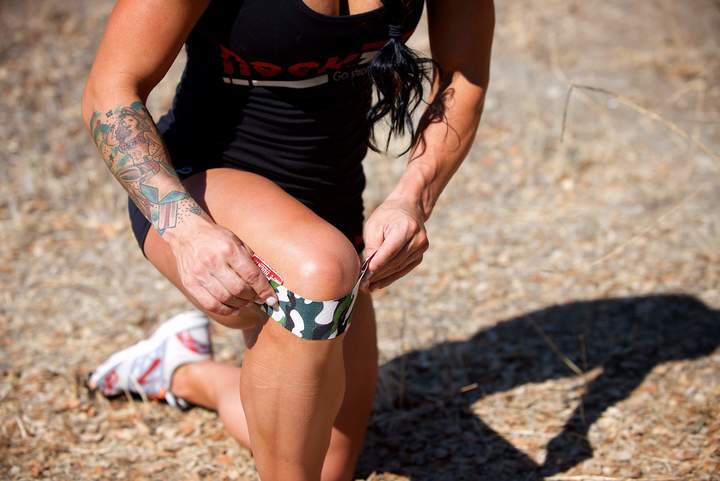Knee swelling can be a bothersome and painful condition that affects many individuals. Whether it occurs due to an injury, overuse, or an underlying medical condition, understanding the common causes and available treatment options is essential for effective management. In this article, we will delve into the causes of knee swelling and explore various treatment strategies.
Common Causes of Knee Swelling:
- Injury: One of the primary causes of knee swelling is an injury, such as a sprain, strain, or ligament tear. These injuries can lead to inflammation and fluid accumulation within the knee joint, resulting in swelling.
- Overuse: Repetitive strain on the knee joint due to activities like running, jumping, or excessive exercise can cause swelling. Overuse injuries like tendonitis or bursitis can lead to inflammation and subsequent knee swelling.
- Arthritis: Both rheumatoid arthritis and osteoarthritis can cause knee swelling. Rheumatoid arthritis is an autoimmune disease that leads to joint inflammation, while osteoarthritis occurs due to wear and tear on the knee joint over time.
- Infection: In rare cases, a bacterial or fungal infection can lead to knee swelling. This condition, known as septic arthritis, requires immediate medical attention to prevent further complications.
- Gout: Gout is a type of arthritis caused by the buildup of uric acid crystals in the joints, including the knee. It often leads to sudden and severe knee swelling accompanied by intense pain.
Treatment Options for Knee Swelling:
- Rest and Elevation: For mild cases of knee swelling, resting the affected leg and elevating it above heart level can help reduce inflammation and fluid buildup.
- Ice Packs: Applying ice packs or cold compresses to the knee for 15-20 minutes several times a day can provide pain relief and minimize swelling.
- Compression: Wearing a compression bandage or knee brace can help support the joint, reduce swelling, and provide stability.
- Non-Steroidal Anti-Inflammatory Drugs (NSAIDs): Over-the-counter NSAIDs like ibuprofen or naproxen sodium can help reduce pain and inflammation associated with knee swelling. However, it is important to follow the recommended dosage and consult a healthcare professional if necessary.
- Exercise Therapy: One of our providers can design a personalized exercise program to strengthen the knee muscles, improve flexibility, and reduce swelling. They may also incorporate techniques like manual therapy and ultrasound to enhance healing.
- Injections: In severe cases, corticosteroid injections may be recommended to alleviate inflammation and reduce knee swelling. Hyaluronic acid injections can also provide lubrication and cushioning within the joint for individuals with arthritis.
- Surgical Intervention: If conservative treatments fail to provide relief, surgical options like arthroscopy, knee replacement, or joint drainage may be considered, depending on the underlying cause and severity of knee swelling.
Taping the Knee for Swelling Management:
Taping the knee can be an effective technique for managing swelling and providing support to the joint. Here are a few taping methods commonly used:
- Compression Taping: This method involves applying a compression bandage or kinesiology tape around the knee joint. The tape should be wrapped snugly but not too tight, allowing for proper circulation. Compression taping helps reduce swelling by preventing fluid accumulation and promoting lymphatic drainage.
- Patellar Taping: Patellar taping focuses on stabilizing the kneecap, especially when swelling is caused by conditions like patellofemoral pain syndrome. The tape is applied in a specific pattern to hold the patella in proper alignment, reducing excessive stress on the joint and minimizing swelling.
- Lymphatic Taping: Lymphatic taping targets the lymphatic system, which plays a crucial role in draining excess fluid from the tissues. By applying specialized lymphatic tape in a specific pattern, the taping technique stimulates lymphatic flow and can aid in reducing knee swelling.

To learn how to taper your knees using our favorite tape, Rocktape click here.
Taping should be performed by a healthcare professional or under their guidance to ensure proper technique and adequate support. It is important to note that taping is not a standalone treatment but can complement other management strategies, such as rest, medication, and physical therapy, for comprehensive knee swelling management.
Effectively managing knee swelling requires a thorough understanding of its common causes and treatment options. Whether through rest, ice, compression, medication, physical therapy, injections, or surgery, a tailored approach can help individuals find relief and restore their knee function. If you are experiencing persistent knee swelling, it is advisable to consult a healthcare professional for an accurate diagnosis and appropriate treatment plan.

Recent Comments